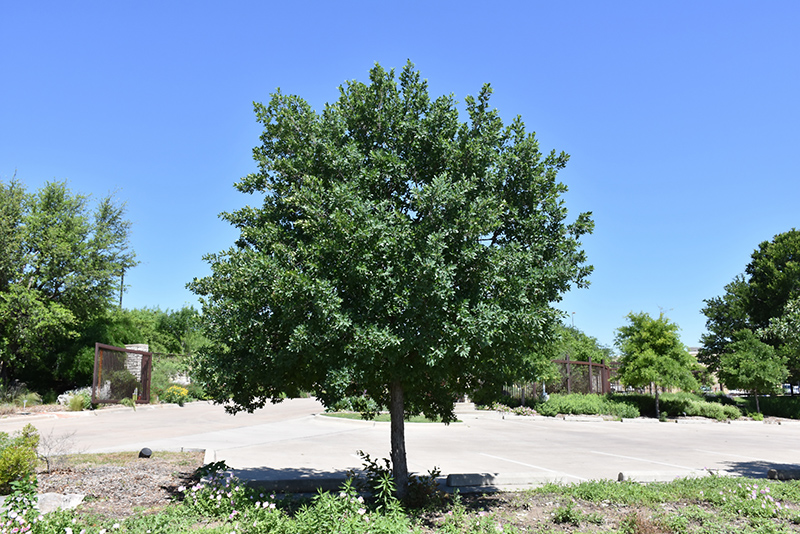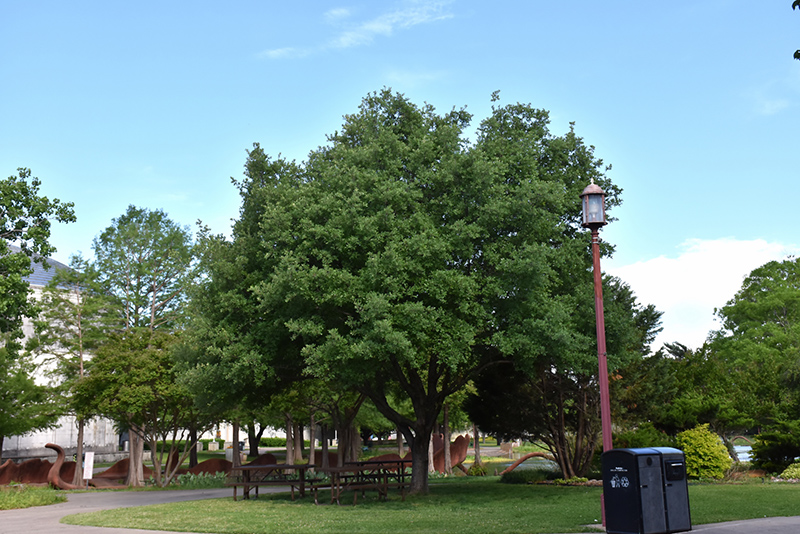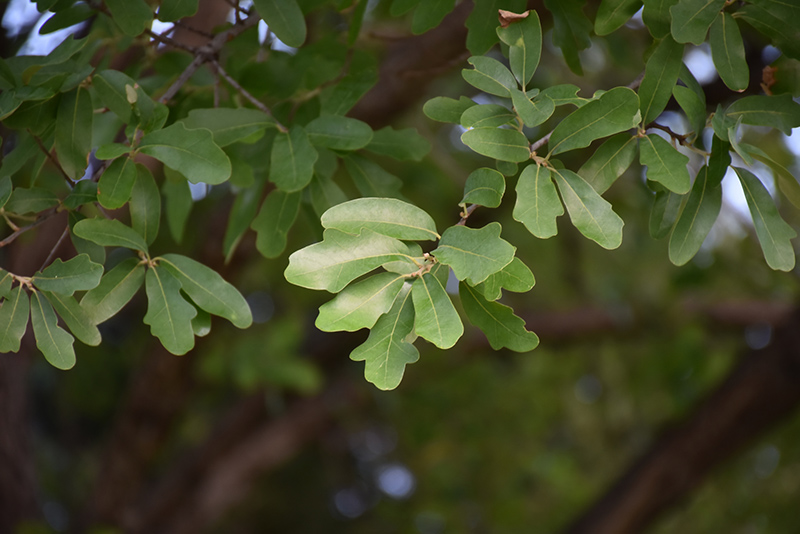Height: 35 feet
Spread: 30 feet
Sunlight:
![]()
Hardiness Zone: 7a
Other Names: Smoky Oak, Canyon Oak, Rock Oak
Description:
An attractive small to medium sized oak with a stocky trunk; produces peach colored new foliage that matures to green with a blue cast; extremely drought tolerant and adaptable to tough environments; slow growing; an excellent shade or accent tree
Ornamental Features
Lacey Oak has attractive grayish green foliage with creamy white veins and tinges of powder blue which emerges peach in spring on a tree with an upright spreading habit of growth. The oval leaves are highly ornamental and turn outstanding shades of peach, yellow and brown in the fall. However, the fruit can be messy in the landscape and may require occasional clean-up.
Landscape Attributes
Lacey Oak is a deciduous tree with an upright spreading habit of growth. Its average texture blends into the landscape, but can be balanced by one or two finer or coarser trees or shrubs for an effective composition.
This tree will require occasional maintenance and upkeep, and is best pruned in late winter once the threat of extreme cold has passed. It is a good choice for attracting squirrels to your yard. Gardeners should be aware of the following characteristic(s) that may warrant special consideration;
- Messy
- Insects
- Disease
Lacey Oak is recommended for the following landscape applications;
- Accent
- Shade
Planting & Growing
Lacey Oak will grow to be about 35 feet tall at maturity, with a spread of 30 feet. It has a high canopy with a typical clearance of 6 feet from the ground, and should not be planted underneath power lines. As it matures, the lower branches of this tree can be strategically removed to create a high enough canopy to support unobstructed human traffic underneath. It grows at a slow rate, and under ideal conditions can be expected to live to a ripe old age of 300 years or more; think of this as a heritage tree for future generations!
This tree should only be grown in full sunlight. It is very adaptable to both dry and moist locations, and should do just fine under average home landscape conditions. It may require supplemental watering during periods of drought or extended heat. It is not particular as to soil type or pH. It is somewhat tolerant of urban pollution. This species is native to parts of North America.
Disclaimer - This Plant Finder tool is an online resource representing many of the varieties that we carry over the course of the season, and is intended for informational purposes only. Inventory varies seasonally, so we cannot guarantee that every plant will be in stock at all times - please contact the store directly for current availability. It does not include our entire selection of plants, so be sure to visit our store to see varieties that may not be represented on this list.



